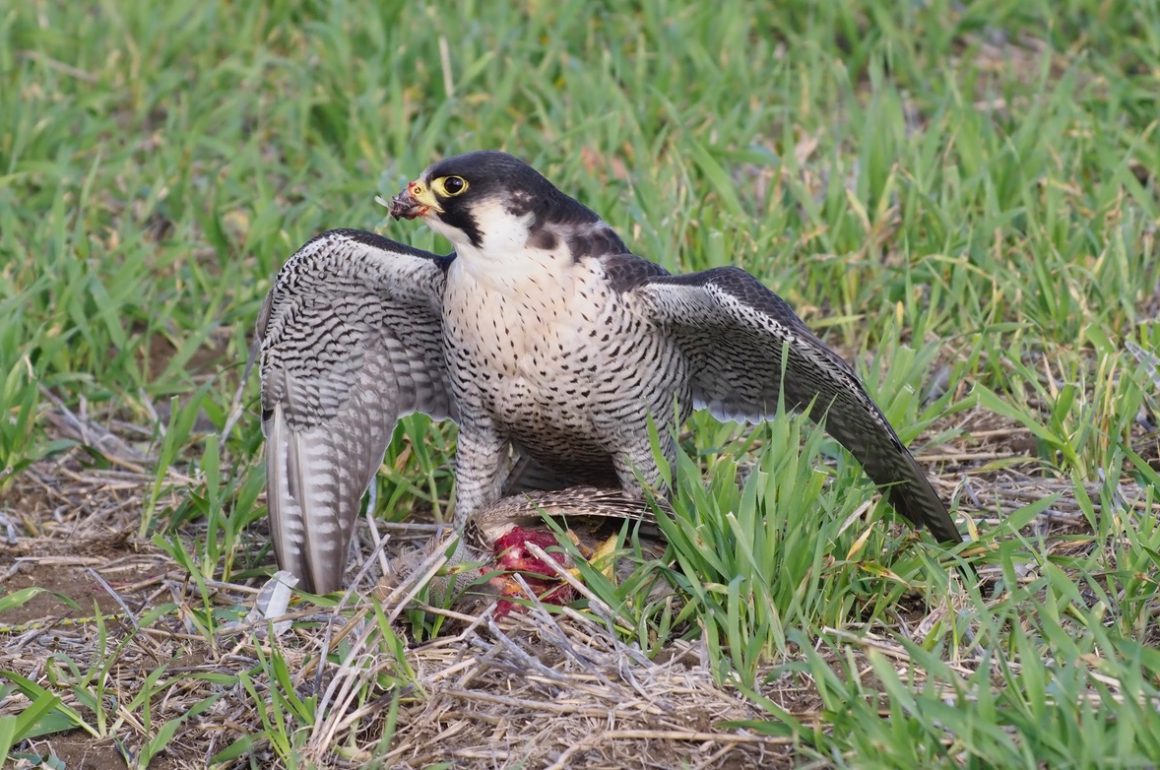
Similarities between the Golden Nugget Casino penthouse in Atlantic City, New Jersey, and Chichester Cathedral, West Sussex, are not obvious, but there is one. Both buildings host nesting pairs of Peregrines. I’m not sure how many other casinos can boast nesting falcons, but a remarkable number of cathedrals and churches in Britain now do so, along with many famous buildings, ranging from Tate Modern in London to the clock tower of Cardiff City Hall in Wales.
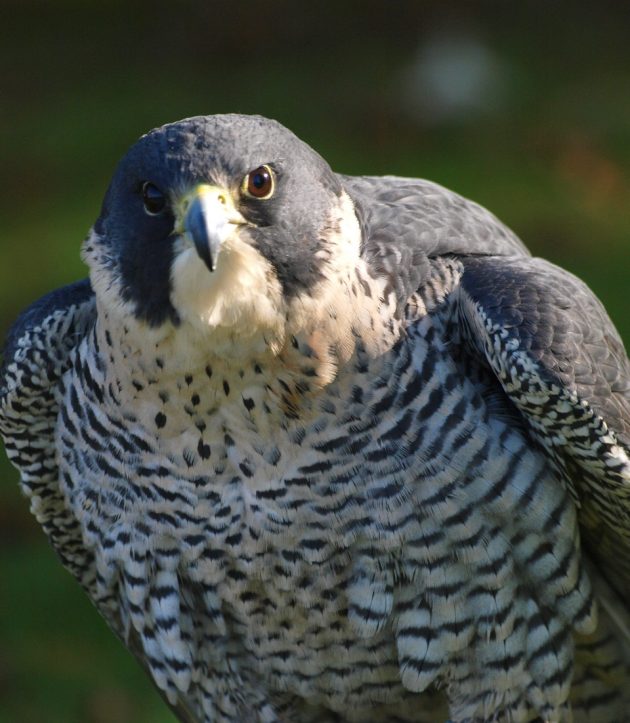
Sixty years ago the possibility of Peregrines nesting in our city centres was beyond the wildest dreams of even the most optimistic conservationists. Britain’s Peregrine population collapsed in the early 1960s, the result of poisoning by organochlorine pesticides that either killed the birds or rendered them infertile. The falcons’ low-point was 1963, when only three breeding pairs were known in southern England, and only 13% of Welsh eyries were occupied. The peregrine’s comeback was due to protection and the birds’ own powers of recovery. The first convincing signs of numbers increasing were noted in 1967, and by 1981 the population nationally was at 90% of its pre-war level. Slowly but surely the traditional eyries were recolonised, with those on the sea cliffs of eastern England the last to be resettled.
By the late 80s population pressure was pushing Britain’s Peregrines into exploring urban sites. Swansea was one of the first British towns to claim a successful pair when, in 1990, a pair bred on the Post Office Tower. The following year several more urban falcons were discovered, ranging from a pair on a factory chimney on the Cheshire/Lancashire border to a warehouse above the Mersey in Liverpool. The following year Liverpool Cathedral gained a nesting pair.
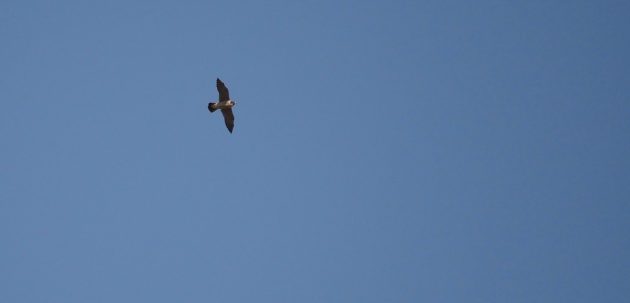
Since the early 90s the colonisation of our towns has continued steadily, and now there’s hardly a major city in the British Isles that cannot boast at least one pair, and possibly several. It’s easy to explain why these birds seem so fond of cathedrals. In many cities cathedrals may no longer be one of the tallest buildings, but they invariably have far more ledges suitable for nesting than modern tower blocks. It is good to report, too, that the clergy has been generally supportive of their high-rise tenants. Not only do the falcons help disperse the unwelcome Feral Pigeons, they also attract visitors.
Tempting falcons to nest on tower blocks is simple, as all that’s needed is a suitably situated nest box filled with a shallow layer of sand and gravel. Peregrines don’t build nests of their own, but do like to make a scrape in which they can lay their eggs. They sometimes attempt to nest on unsuitably flat ledges, with the inevitable result that their eggs roll off. Unlike cliff-nesting seabirds such as Guillemots and Razorbills that lay heavily tapered eggs that roll within their own axis, Peregrine eggs are round so need a scrape for security.
Most urban Peregrines seem to be remarkably successful at rearing their young, no doubt a reflection of a plentiful food source and a lack of competition. Should young birds leave their urban eyrie too early, the consequences of falling into a busy street can be fatal, but the danger isn’t really much different than it is for birds nesting on sea cliffs.
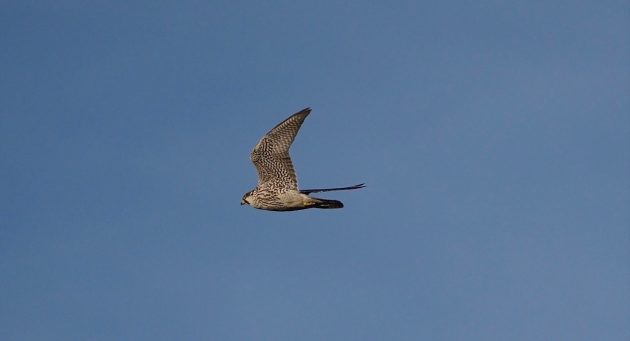
One of the primary reasons why Peregrines have moved so successfully into towns is an abundance of prey. Rock Doves or Feral Pigeons are their traditional favourite quarry, and it’s one of which there is no shortage in every town. The unfortunate pigeons have few fans, so almost everyone is happy to see the falcons killing and eating them.
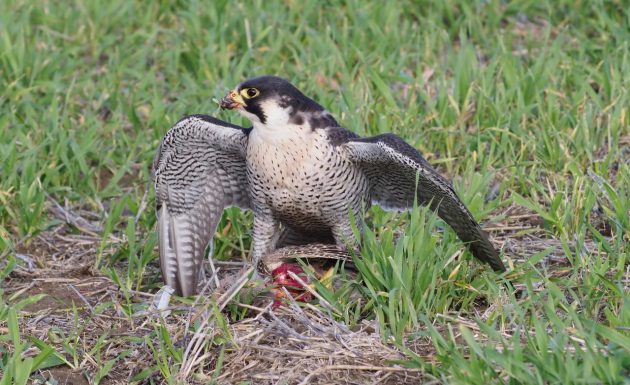
We have long taken urban Kestrels for granted, and we are now doing the same with Peregrines. This is likely to be bad news for other urban dwelling birds of prey – in Exeter Peregrines have been recorded killing both Sparrowhawks and Kestrels – but there’s no doubt that city stocks of Feral Pigeons are well up to supporting the expanding Peregrine population. The author Derek Ratcliffe, whose book The Peregrine Falcon is a classic study of the bird, noted that the pleasure of “seeing these fine birds and learning their ways” was that it took him to “a country endlessly varied and magnetically beautiful”. The same can hardly be said of our inner cities, but the presence of peregrines does make the urban jungle a much more exciting place.
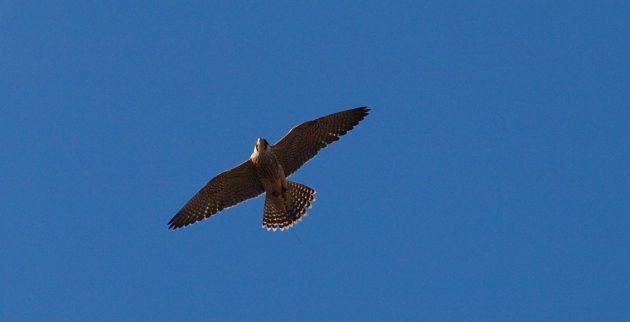



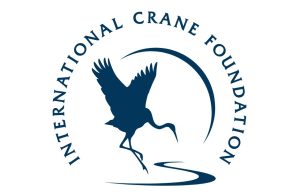







Another brilliant report by David T.
A thoroughly enjoyable read. About 3 years ago a bird ringing friend of mine from Nottinghamshire, UK found a Peregrine nesting in a tree in the north of the county.
Whilst I am informed this nesting behaviour is not uncommon in some parts of Europe it was believed to be the first record of tree nesting peregrine’s in the UK.
Peregrine Falcons are urban birds in Toronto, Canada. They nest all over the city.
Back in 2008, a friend with a 5th-story apartment in Algeciras, Spain hosted my family for a few days. She had a small planting box on her balcony, which had become the nest for several baby owls, right beside a glass door. Unfortunately, I had not yet returned to birding, so I don’t know what species they were. But I certainly remember them as an awesome example of how nature manages to find a way.
Indeed, peregrines have been urban birds in Canada for a long time. Especially in the prairies, where there are very few cliffs for nesting. Usually the tallest building in a prairie city is a hotel — it was in 1989 that I saw a peregrine on the Delta Hotel in Winnipeg.
This is the best summary of the Peregrines’ return I have read in a long time. Also, strong advice to “look up” when in town…